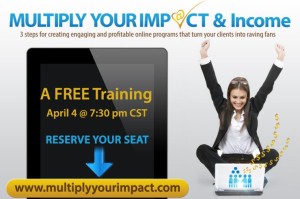Five benefits of using multimedia to build your expert brand in academia and beyond
Our Bookphoria team has just returned from the University of Iowa in Iowa City, where we were honored to be part of the STARTALK program. We delivered our presentation on the use of multimedia for academics so that they could build their expert brands to be both in and on demand.
Because of the economic situation and development of technology, more and more academics need to find new ways to promote their courses and programs. Some start information businesses or consulting practices as full-time or part-time options. All academics need to enhance their presentation skills and online visibility to succeed in their professional endeavors. In order to stand out in the crowded industry, academics must position themselves as a known authority in their field. While being subject-matter experts, they often lack marketing skills and may dislike self-promotion.
The good news is that you can build your expert brand without having to push sales on your clients or spend endless hours figuring out how to make social media work for your business. Multimedia storytelling offers a perfect solution to combine what you know and love (education) with effective promotion. In multimedia storytelling, you pair different elements of your expertise with various media platforms to develop engaging content and build unique client experiences by offering your own blend of edutainment.
According to Getty Images statistics (2012), 92% of people want brands to make ads to feel like a story or game. Multimedia solutions allow you to advertise your expertise across multiple channels that your audience already uses to build stronger emotional connections and higher engagement with your business. Here are five benefits of using multimedia to build your expert brand:
- You grow your visibility and influence online.
- You engage your audience and make your presentations appeal to multiple senses and modes of learning by using games, animation, interactive activities, infographics, scenarios and digital stories.
- You leverage your content by re-purposing and remixing publications, video and audio information products, and marketing materials.
- You stock your toolbox with ready-to-use multimedia learning modules to enhance your branding and marketing as you educate your clients.
- You create an engaging and dynamic expert portfolio that showcases your unique strengths and expertise to prospects, conference organizers, as well as potential employers.
Bookphoria is here to help you build your expert brand to be both in and on demand. Sign up for our complimentary consultation at http://bookphoria.com/register-for-your-complimentary-consultation/






 Resilience is the ability to bounce back. Resilient communication allows us to bounce back from any negativity, perceived threats or attacks that may happen in the course of a social interaction. A good visual for it is a rubber band ball – a bouncy ball, made by wrapping rubber bands around its core. Each individual rubber band can stretch to a certain point but it can’t bounce as well as the collection of those rubber bands. Similarly, there are stress and tension points in most important conversation. A certain amount of tension is not a bad thing if we know how to use it to create breakthroughs and moments of growth and solve problems. But if we snap in a conversation because of too much stress or we feel detached, communication falls apart and we lose resilience.
Resilience is the ability to bounce back. Resilient communication allows us to bounce back from any negativity, perceived threats or attacks that may happen in the course of a social interaction. A good visual for it is a rubber band ball – a bouncy ball, made by wrapping rubber bands around its core. Each individual rubber band can stretch to a certain point but it can’t bounce as well as the collection of those rubber bands. Similarly, there are stress and tension points in most important conversation. A certain amount of tension is not a bad thing if we know how to use it to create breakthroughs and moments of growth and solve problems. But if we snap in a conversation because of too much stress or we feel detached, communication falls apart and we lose resilience.